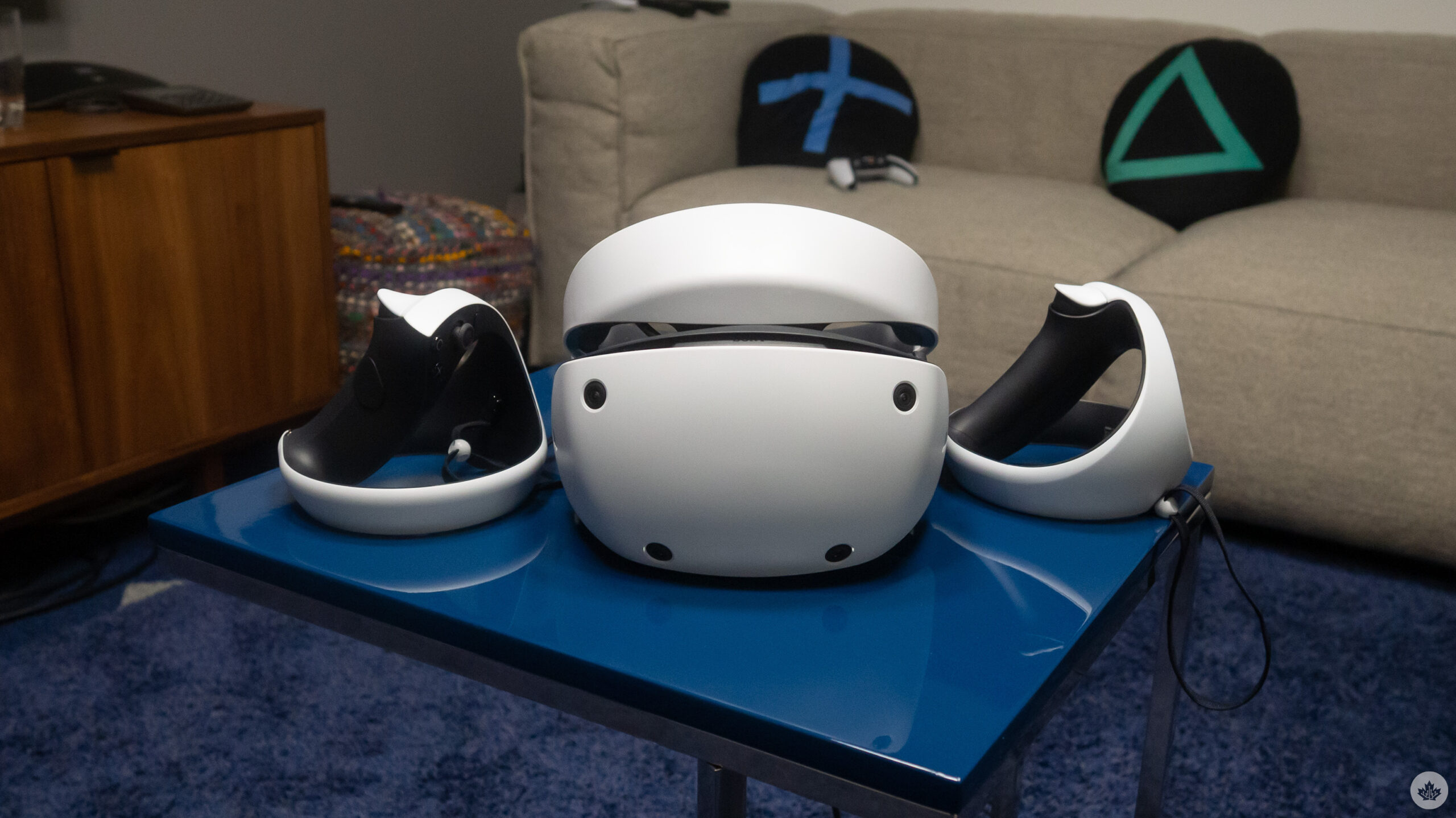
When Sony’s PlayStation VR launched in 2016, I was really into it. Games like Resident Evil 7 and Batman: Arkham VR offered extremely immersive and unique experiences that quickly got me excited about the tech’s potential. Over time, that feeling only increased as I learned about all of the other applications for VR, like healthcare.
But as I started getting busier, the thought of physically navigating the many cables and wearing a big headset at the end of a long day felt less appealing. The launch model lacked also HDR passthrough, which made it tedious to have to connect and reconnect cables every time I wanted to switch between regular and VR games. As a result, I stopped using my PS VR.
Now, though, I find myself with renewed excitement about the platform thanks to the PlayStation VR2. The prospect of a successor headset for the PS5 was always tantalizing, and after going hands-on with it at PlayStation Canada’s office, I’m especially eager to play more.
The headset itself
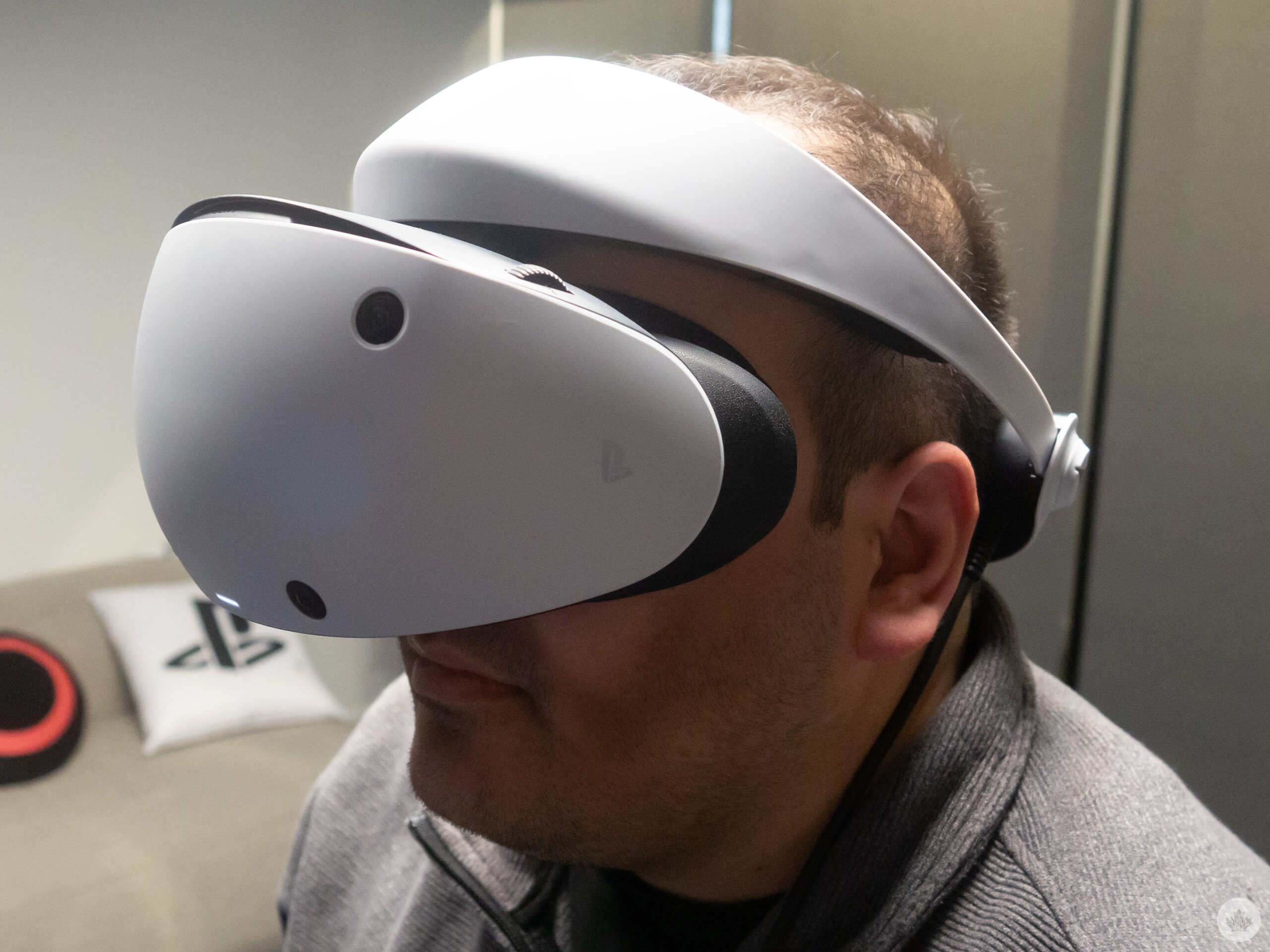 When you first put on the PS VR2, there is, of course, a brief calibration process. Most of that is fairly standard for a VR headset, but two features immediately stood out. First, there’s the new See-Through View, which leverages the PS VR2’s new front cameras to let you quickly see get a black-and-white look at the real world. With past VR devices, it felt cumbersome to have to lift the headset just to see my surroundings, especially after you’ve found the right adjustments to fit it on your head. Seriously, it can’t be understated just how handy it is to just press a button to do this now without needing to remove the headset.
When you first put on the PS VR2, there is, of course, a brief calibration process. Most of that is fairly standard for a VR headset, but two features immediately stood out. First, there’s the new See-Through View, which leverages the PS VR2’s new front cameras to let you quickly see get a black-and-white look at the real world. With past VR devices, it felt cumbersome to have to lift the headset just to see my surroundings, especially after you’ve found the right adjustments to fit it on your head. Seriously, it can’t be understated just how handy it is to just press a button to do this now without needing to remove the headset.
In a similar vein, I was taken aback by the new eye-tracking functionality. I’ve never used a VR headset with eye-tracking before, so to see the circles light up as I looked at them was extremely cool, if a little freaky at first. Naturally, there are neat game-specific use cases for this technology (one of which I’ll get into later), but in general, this also helps improve fidelity across the board through a process called foveated rendering. This means that the headset can focus on enhancing the detail of what you’re currently looking at by reducing image quality at everything in your periphery.
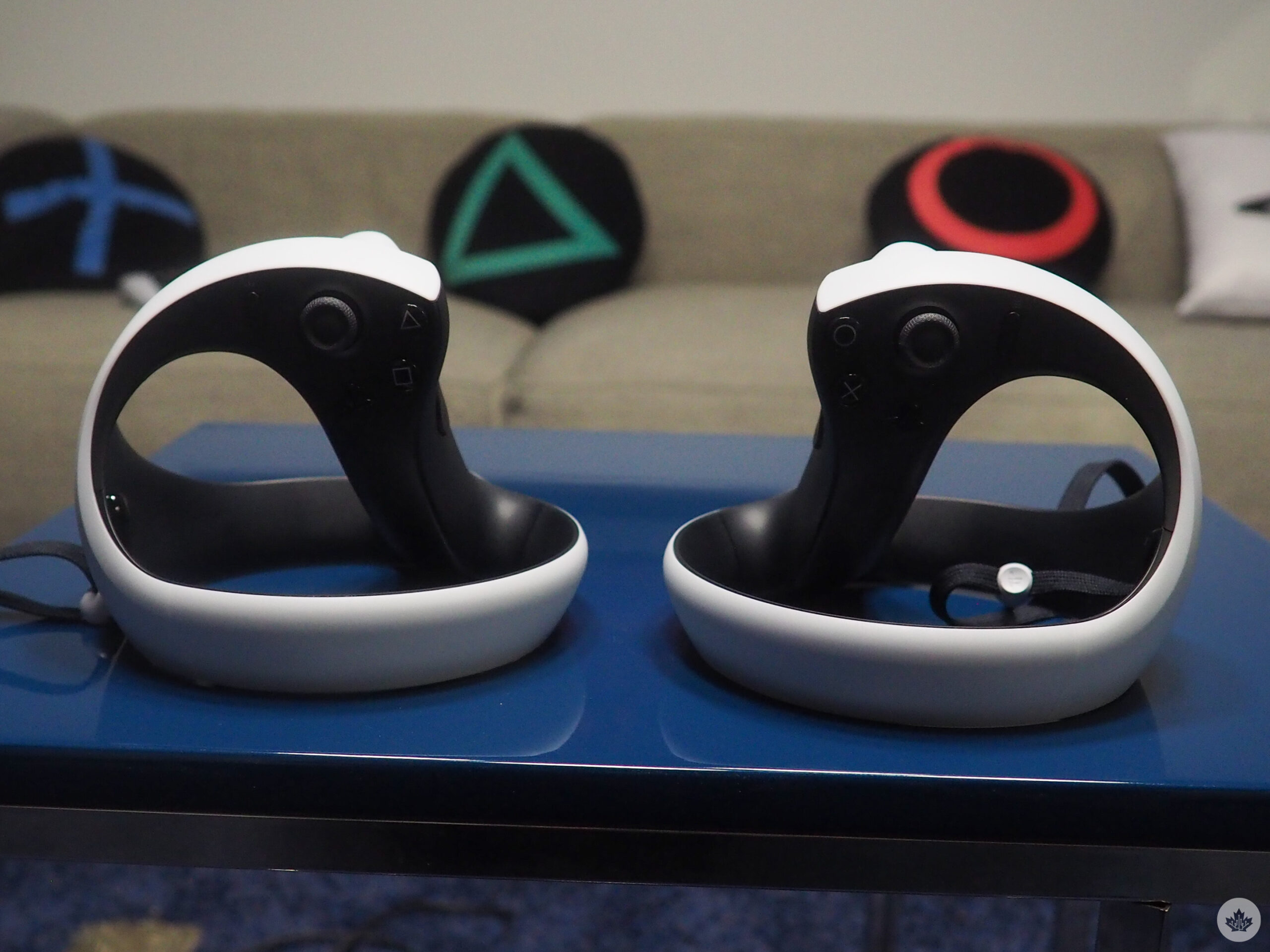 Then there are the controllers. Rather than iterate on the original PS VR’s wand-like Move controllers, the PS VR2 has spherical ‘Sense’ controllers. I quickly appreciated this novel futuristic look. On top of that, they have some of the PS5’s DualSense gamepad’s signature features, like adaptive triggers and haptic feedback. Most importantly, though, that round form factor gives them a very natural and comfortable grip.
Then there are the controllers. Rather than iterate on the original PS VR’s wand-like Move controllers, the PS VR2 has spherical ‘Sense’ controllers. I quickly appreciated this novel futuristic look. On top of that, they have some of the PS5’s DualSense gamepad’s signature features, like adaptive triggers and haptic feedback. Most importantly, though, that round form factor gives them a very natural and comfortable grip.
Horizon Call of the Mountain
After that brief setup process, I was immediately put into Horizon Call of the Mountain, one of the PS VR2’s flagship titles. It’s part of Guerrilla Games’ beloved Horizon series and was developed by the Dutch studio and Liverpool-based Firesprite, the team behind VR titles like The Persistence and The Playroom VR. In other words, there’s some strong pedigree behind this title, and thankfully, it shows.
The demo begins with your character, a prisoner named Ryas, as he’s ferried along in a boat. This slow opening to ease you in felt immediately reminiscent of Skyrim‘s iconic opening in how quickly and effectively it creating intrigue. Who really is your character? Why is he imprisoned? Who are your captors? Where are you? Adding to that appeal is the fact that Ryas is a Shadow Carja, an antagonistic faction from Horizon Zero Dawn. The idea of seeing this fascinating machine-overridden post-apocalyptic world from the perspective of someone completely different from a heroine like Aloy is incredibly promising.
The other benefit to this subdued intro is that it really lets you appreciate just how stunning this world looks in the 4K-capable PS VR2 headset. I marvelled as rays of light poke through the dense, lush vines, reflections shimmer on the water and crisp leaves realistically fall over our heads. Meanwhile, the other people on the boat are rendered through sharp, detailed character models are even react if you look at them for too long — thank you, eye-tracking! You can even see little hair fibres on ropes. Overall, it didn’t just look good for a VR game; it looked good in general.
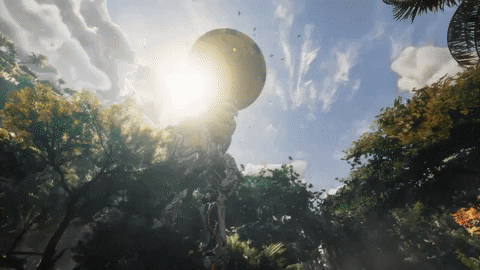
What’s more, the first-person view of this richly-crafted setting means you get to see Horizon‘s wickedly cool machine designs in a whole new light. As our boat chugged along, we saw everything from the spindly Watchers to the deer-like Grazers. But it was the Tallnecks that got me. Horizon players will know how much of an ordeal it was to ascend these massive giraffe-like robots, so to see one towering above me in VR was truly jaw-dropping. Honestly, it evoked a similar magical feeling to the one created by the iconic “Welcome to Jurassic Park” scene from Spielberg’s 1993 classic.
Visuals aren’t enough, though; it has to feel good to play. In that regard, Call of the Mountain also impressed. Admittedly, much of the middle stretch of the demo consisted of climbing, but I didn’t mind because it felt so natural. Like Zero Dawn or Uncharted, Call of the Mountain features ledges with a clear colour coating to show you what’s climbable, but unlike other games, you actually have to put in the work. There’s a boring sense of automation in third-person climbing, but in VR, it feels immersive. Moving my arms up and down, left and right, sometimes even going hand-over-hand as I figure out where to go and work my way up feels incredibly cool. It’s the closest I’ll ever get to actually scaling tall structures, and I can do it from the safety of VR. Nathan Drake, eat your heart out.
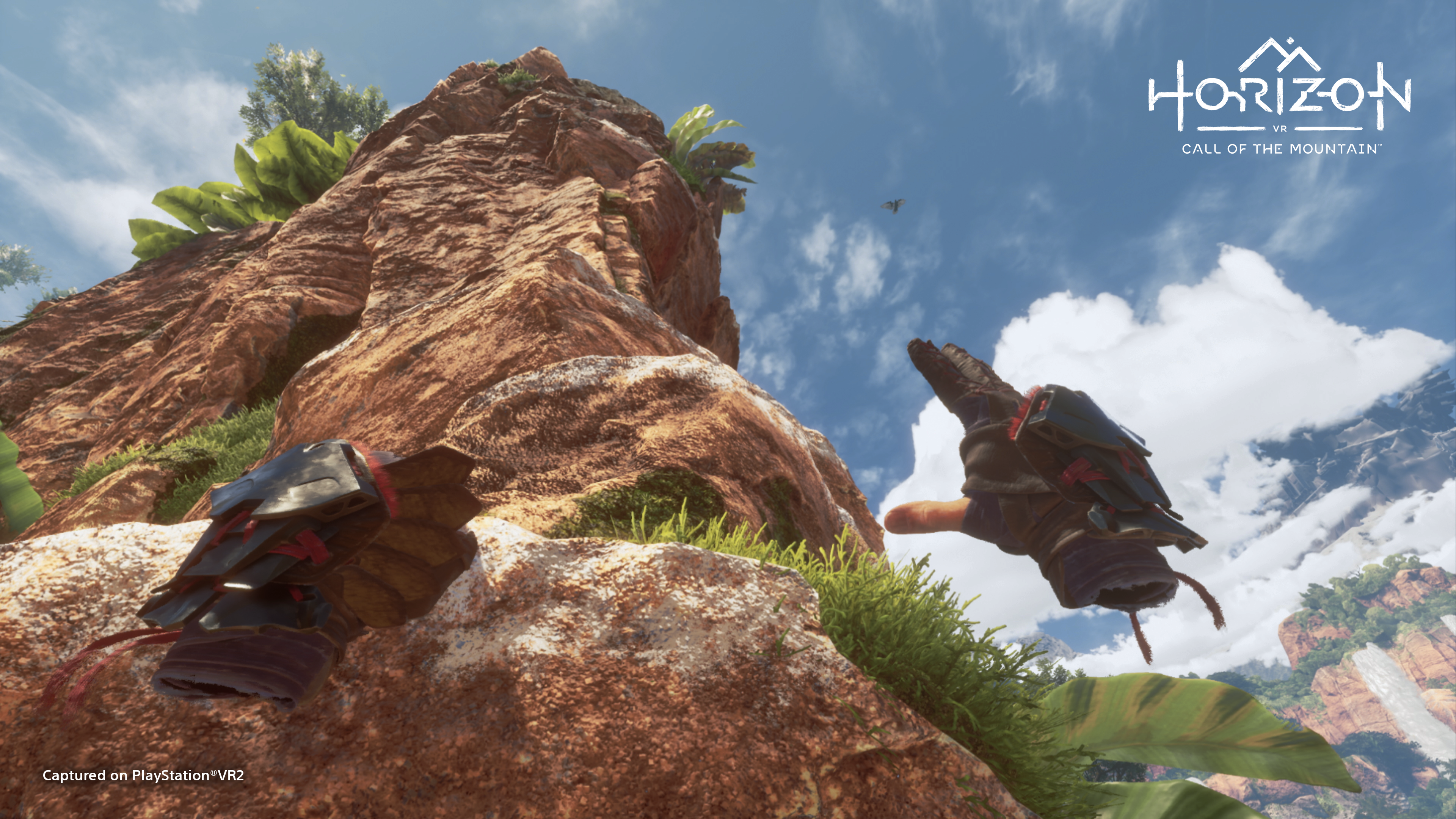 Then there’s your bow. Requiring you to reach back and unholster the weapon from your back then do the same to pick up an arrow before you nock it only builds on the immersion. Naturally, pulling back gives you a satisfying DualSense-esque vibration that enhances the full degree of motion you have over the actual aiming. All of this works together to truly sell the idea that you’re using a bow and arrow. It also adds a welcome layer of tension to combat, as the pressure’s on you to quickly draw, load, aim and shoot. The only element here that felt a little awkward was dodging, which you do by holding a button and pushing your arm to either side. To be fair, I’m sure this was the best way to mitigate any motion-sickness for more sudden dashing, but it took some getting used to.
Then there’s your bow. Requiring you to reach back and unholster the weapon from your back then do the same to pick up an arrow before you nock it only builds on the immersion. Naturally, pulling back gives you a satisfying DualSense-esque vibration that enhances the full degree of motion you have over the actual aiming. All of this works together to truly sell the idea that you’re using a bow and arrow. It also adds a welcome layer of tension to combat, as the pressure’s on you to quickly draw, load, aim and shoot. The only element here that felt a little awkward was dodging, which you do by holding a button and pushing your arm to either side. To be fair, I’m sure this was the best way to mitigate any motion-sickness for more sudden dashing, but it took some getting used to.
Ultimately, I’m excited to play more of Call of the Mountain. All signs point to this being a clever addition to the Horizon universe that is also inviting to newcomers through intuitive, engaging gameplay. Best of all, PlayStation says this is about seven hours long, which makes it a fair bit meatier than other VR launch titles we’ve seen, like Arkham VR.
Final thoughts
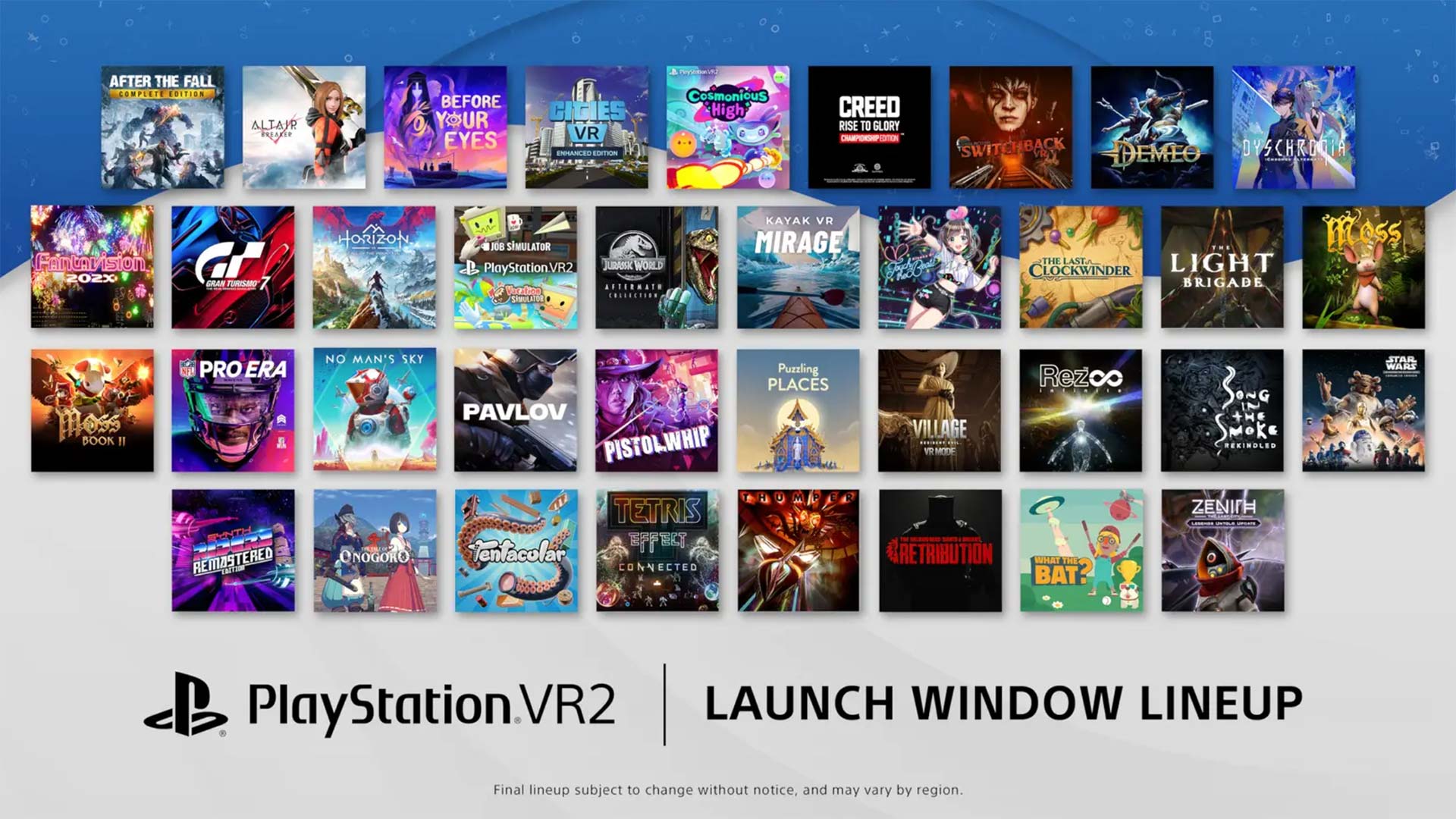 Given that this was a relatively brief demo session, there’s still a lot I need to see. For one, the rest of the launch lineup. PlayStation is promising around 30 games will launch within the PS VR2’s first month. While that’s certainly a good number of titles, I’m also a bit disappointed that a lot of them are spins on existing experiences, like Moss, No Man’s Sky, Gran Turismo 7, Resident Evil Village and Star Wars: Tales from the Galaxy’s Edge. Therefore, it remains to be seen how many other truly new, “must-play” titles in the vein of Call of the Mountain that it will actually have. Then there’s the cost. At $750 for the standard model and $819 for a Call of the Mountain bundle, it’s incredibly pricey. That’s more than the PS5 itself!
Given that this was a relatively brief demo session, there’s still a lot I need to see. For one, the rest of the launch lineup. PlayStation is promising around 30 games will launch within the PS VR2’s first month. While that’s certainly a good number of titles, I’m also a bit disappointed that a lot of them are spins on existing experiences, like Moss, No Man’s Sky, Gran Turismo 7, Resident Evil Village and Star Wars: Tales from the Galaxy’s Edge. Therefore, it remains to be seen how many other truly new, “must-play” titles in the vein of Call of the Mountain that it will actually have. Then there’s the cost. At $750 for the standard model and $819 for a Call of the Mountain bundle, it’s incredibly pricey. That’s more than the PS5 itself!
Evidently, then, it’s too early to tell whether the PS VR2 warrants a day-one purchase. But based on my first hands-on impressions, I can say that I’m really liking what PlayStation is doing with the headset itself. Call of the Mountain is also shaping up to be a killer app. All of this has gotten me excited to get my hands on one myself to fully see what it has to offer, and that’s a great feeling to have for this lapsed VR fan.
The PS VR2 and Horizon Call of the Mountain will both launch in Canada on February 22nd.
MobileSyrup may earn a commission from purchases made via our links, which helps fund the journalism we provide free on our website. These links do not influence our editorial content. Support us here.


